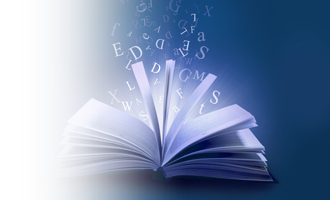What is an Accordion Fold?
- An accordion fold is generally two parallel folds in the opposite direction to give the appearance of the pleats on an accordion. The zigzag nature of this fold sometimes makes it referred to as a Z fold.
What is Aqueous Coating?
- Aqueous coating is a high gloss finish applied directly after printing. This water-based, fast-drying, protective coating makes the product more resilient to smudges, scratching, and other impurities.
What is a Bleed in printing?
- A bleed is when printed images extend to the edge of a finished piece of paper. Digital printers have a margin (~0.25"), so to avoid white space, a bleed setup must be used — typically 0.5" larger than the final size.
What does C1S mean?
- C1S stands for Coated One Side, referring to paper that has a coating on one side only, applied during manufacturing.
What is CMYK?
- CMYK is the abbreviation for Cyan, Magenta, Yellow, and Key (black). It is the subtractive color model used in most digital and offset printing.
What does Collate mean in printing?
- Collating means assembling pages in order. For example, collated printing produces complete document sets, whereas uncollated separates each page into stacks.
What is a Color Space?
- A color space defines how color values like CMYK or RGB are interpreted by devices and printers. Different spaces can produce different output colors.
What is Comb Binding?
- Comb binding uses a plastic spine with 19 rings to hold punched pages. It allows for page changes and is common in manuals or reports.
What is Digital Printing?
- Digital printing sends digital files directly to a printer, skipping the need for plates, making it cost-effective for small to medium print runs.
What is a Double Parallel Fold?
- A double parallel fold involves folding a sheet in half and then folding it again in the same direction, creating 8 panels.
What does DPI mean?
- DPI stands for Dots Per Inch and measures print resolution. A standard print resolution is 300 DPI.
What is Duplex Printing?
- Duplex refers to double-sided printing, where both sides of the paper are printed on.
What is a Gate Fold?
- A gate fold has two end panels that open to reveal a larger central panel, like doors opening.
What is Gloss?
- Gloss refers to a shiny coating applied to paper either during or after production for a smooth, reflective surface.
What is Grayscale?
- Grayscale uses only black and white with varying shades. It's common for monochrome print jobs or converting color images to black and white. This is different than Rich Black, which uses other colors to increase the darkness.
What does GSM mean?
- GSM (grams per square meter) is a measure of paper weight. Higher GSM papers are thicker and more opaque.
What is Head to Head printing?
- Head to head means both sides of a duplex print align at the top, so both pages face the same way.
What is Head to Toe printing?
- Head to toe refers to duplex printing where the front and back sides are oriented oppositely (top of one aligns with bottom of the other).
What is a Letter Fold?
- A letter fold (or tri-fold) has three panels folded inward with one panel overlapping another, common in brochures.
What is Matte Finish?
- Matte finish paper has a dull, non-reflective surface that resists fingerprints and is easy to read. This is fairly common with art and photographic prints, but less common with business-oriented products.
What is Offset Printing?
- Offset printing transfers ink from a plate to a rubber blanket, then onto paper. It's ideal for high-volume runs.
What is Pantone (PMS)?
- Pantone Matching System (PMS) is a standardized color system used for matching colors precisely in print. While somewhat common in offset printing, most digital printing cannot accomplish precise Pantone color matching.
What is Perfect Binding?
- Perfect binding uses glue to bind pages to a spine, creating a clean, professional softcover book.
What is Perforation?
- Perforation involves creating tearable lines in paper using small slits. Common in forms and tickets.
What is a Pixel?
- A pixel is the smallest unit in a digital image, short for "picture element."
What is a Raster Image?
- Raster images are made of pixels and lose quality when enlarged. They're commonly used for photos. This is in direct contrast to a Vector Image.
What is RGB?
- RGB is an additive color model for digital screens. Files in RGB may not match color when printed in CMYK.
What is Saddle Stitching?
- Saddle stitch binding inserts staples along the spine of a set of folded sheets, typically for booklets or magazines.
What is Scoring?
- A crease added to heavy paper to make folding cleaner and reduce cracking.
What is Smooth Paper?
- Smooth paper has a matte-like finish (not glossy) but is slightly more reflective than true matte paper. Compared to matte, smooth coatings make images appear less flat while making colors more vivid and less dull.
What is UV Coating?
- UV coating is a glossy finish cured with ultraviolet light, offering enhanced shine and protection.
What is a Vector Image?
- A vector image uses math-based lines and shapes, allowing it to be resized without losing quality.
What is a Z Fold?
- A Z fold is a zigzag type brochure fold, similar to an accordion fold.

Frequently Asked Questions About Printing Services
This glossary of printing terms is designed help you order online printing services with confidence.
Find answers to common questions about printing terminology. Each entry is structured as a Q&A to help you better understand key concepts in the printing world.
 Processing...
Processing...